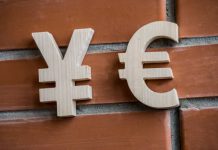Markets
The scoreboard today doesn’t suggest we’re headed for a pivotal moment in (Europe’s) monetary history. Markets were not particularly sidelined with core bond yields shooting higher. German Bunds even underperform US Treasuries. Yields in America add 2.6 bps (2y) to 3.8 bps (30y) in a move that mainly occurred in Asian dealings. German yields rose throughout the European session to add 4.7 bps (2y) to 6.5 bps (10y). European swap yields rise up to 7.2 bps with the 10y on track for a decisive close above the 2% mark. Growth on the continent in the first quarter underwent a sharp upward revision, doubling from 0.3% q/q to 0.6% q/q or 5.4% y/y (was 5.1% in the preliminary reading). It went unnoticed on markets but may provide some comfort to the ECB in the sense that the economy heads into the normalization cycle on a stronger footing than expected. Equities are once again impressed by the sharp yield increases, shedding half a percent in Europe. The US opens mixed. The euro outperforms peers on FX markets. EUR/USD rose from 1.07 to 1.075 currently even as the dollar is in decent shape too. The trade-weighted greenback (DXY) ekes out a small gain from 102.31 to 102.44. Japan’s yen just keeps on sliding. BoJ governor Kuroda is keeping its hands of the currency, saying that it is a matter of the government. He did say a rapid slump is not desirable but those verbal warnings miss every effect. At 134.26 (up from 132.59), USD/JPY is nearing the 135.15 2002 top. EUR/JPY jumps more than two full big figures to 144.14.
At tomorrow’s policy meeting, the ECB will bid farewell to an era of one-sided monetary policy. Inflation has long undershot the 2% inflation target, calling for an ever-easy monetary policy. But this won’t be the case any more in the new inflation forecast. Price pressures will surpass the 2% mark across the policy horizon, up to 2024, serving as the rationale for removing stimulus as soon as July. Early next month, net purchases under APP will end, followed by a first rate hike later that month (25 bps). As already highlighted in Lagarde’s blog post last month, negative deposit rates end by September. We’ll be looking for clues in the Q&A session whether that means zero (meaning another 25 hike in September) or positive interest rates. Rumours circulate the ECB may also announce a new bond buying programme (oh, the irony), designed officially to “secure monetary policy transmission” across countries. In practice, it is to prevent (peripheral) yields of highly indebted countries rising too much, too fast.
News Headlines
Czech President Zeman named three new members to the governing board. He picked economic professor and previous (dovish) CNB-member Jan Frait, the head of the National Budget Council Eva Zamrazilova and analyst of the Chamber of Commerce Karin Kubelkova. Last month, he promoted Alex Michl from CNB board member to governor in a dovish rotation which will take place at the August 4 meeting. Apart from the actual nominations, it’s telling that none of the outgoing (hawkish) board members were renominated for a second term. It helps explaining why Czech rates extended this week’s increase today, in anticipation of one final hawkish adieu at the June 22 meeting. Money markets discount at least another 100-125 bps move (from 5.75%) currently. Czech swap rates add 15 to 20 bps across the curve today. The Czech koruna ends a fortnight of dull trading with EUR/CZK falling from 24.75 to 24.60.
Hungarian headline inflation accelerated by 1.7% M/M in May, to a 20-yr high of 10.7% Y/Y. Price increases were broad-based, ranging from 3.5% M/M (18.6% Y/Y) for food over 0.9% M/M (18.4% Y/Y) for consumer durables to 0.7% M/M (6.8% Y/Y) for services. The Hungarian central bank (MNB) simultaneously published its own underlying inflation indicators. Core inflation and core inflation excluding indirect tax effects both stand at 12.2% Y/Y. Indicators measuring households’ inflation expectations remain significantly above the central bank’s target range (2%-4%). Today’s inflation print strengthens our believe that the MNB slowed down its tightening cycle too soon. The forint trades back in the defensive after a surprisingly bright run since the start of the month. EUR/HUF rises to 391.50 from 388. The Hungarian swap yield curve bear flattens with yields 5.5 bps (30-yr) to 9 bps (2-yr) higher.












